Medieval ring with a skull emblem found in Wales declared treasure
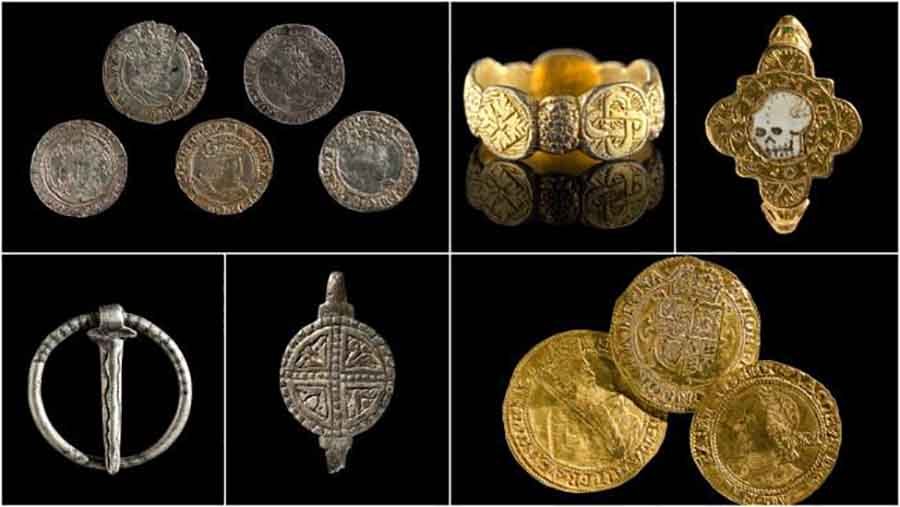
A ‘Memento Mori‘ gold ring engraved with a skull is one of nine stunning medieval and post-medieval objects found in Wales. The ring, found in Carreghofa Community, Powys, would have been kept as a reminder of the inevitability of death.
‘Memento Mori’ is a Latin term that literally means ‘remember you must die. Among the other priceless objects are three gold and silver coin hoards and the first ‘Anglo-Saxon style’ double-hooked fastener to be identified in Wales.
All the nine finds were discovered by metal detectorists in Powys and Vale of Glamorgan and have been declared treasure by National Museum Wales.
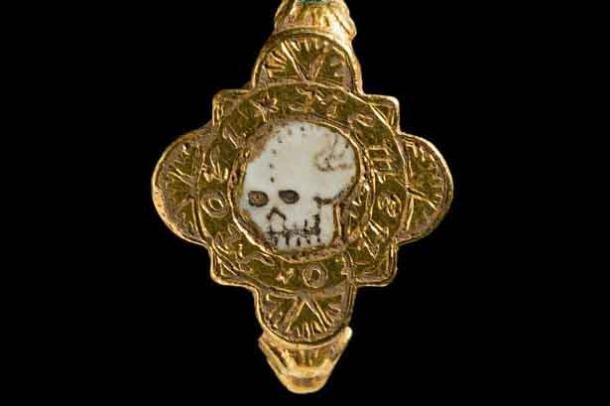
They were all personal items owned by wealthy members of Welsh society from the 9th to the 17th centuries AD. The gold Memento Mori ring, dubbed ‘Treasure case 19.11’ was found in Carreghofa Community by metal detectorist David Balfour.
Its flat bezel is engraved with what National Museum Wales calls ‘death’s head’ – a skull – inlaid with traces of white enamel. The skull is surrounded by the inscription ‘+ Memento Mori’ in a small neat italic script arranged in a circle. The inscription, the style of the engraved skull and the neat italic lettering indicates that this ring dates between 1550 and 1650, according to National Museum Wales.
The government body said in a blog post that it hopes to acquire this artefact for the Welsh national collection.
‘This is a rare example of a Tudor or early Stuart memento mori ring with a clear Welsh provenance,’ said Dr Mark Redknap, deputy head of collections and research at National Museum Wales.
‘Its sentiment reflects the high mortality of the period, the motif and inscription acknowledging the brevity and vanities of life.
‘This discovery increases our knowledge of attitudes to death in early modern Wales.’
Among the other findings, all listed by National Museum Wales this week, are a medieval silver annular brooch, a Tudor silver coin hoard and a medieval silver bar-mount.
Three medieval gold coins (Treasure 19.44) were found by Chris Perkins and Shawn Hendry while metal detecting in Llanwrtyd Community, Powys in April 2019.
The coins are ‘nobles’ from the reigns of Edward III and Richard II (1327-1399), with a total value of 20 shillings, which was about 50 days’ wages for a skilled tradesman.
They were probably buried for safekeeping around the end of the 14th century but were never recovered by their owner. The newly opened Y Gaer Museum, Art Gallery & Library, in the town of Brecon in mid-Wales, hopes to acquire the gold coins for its new galleries.
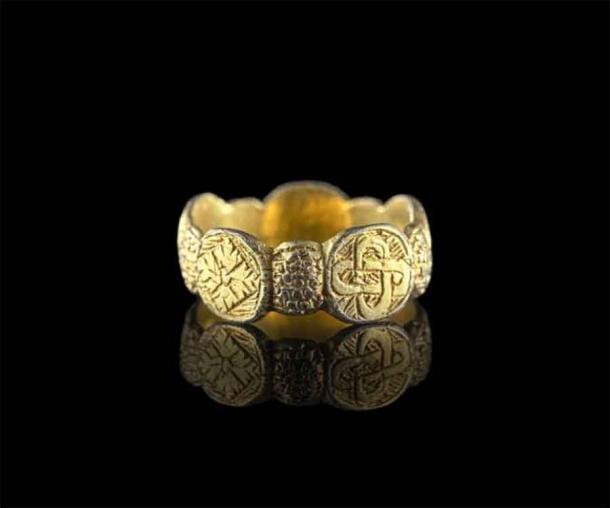
‘Very few gold coins have been discovered within south Powys, so we would welcome the possibility of adding these to Museums new medieval displays,’ said Senior Curator Nigel Blackamore.
A group of five silver coins (Treasure 19.22), comprising 4 groats and a Burgundian ‘double patard’, was discovered by Aled Roberts and Graham Wood in May 2019, while metal detecting in Churchstoke Community, Powys. This small hoard was buried in about 1530 during the reign of Henry VIII, whose portrait features on three of the coins.
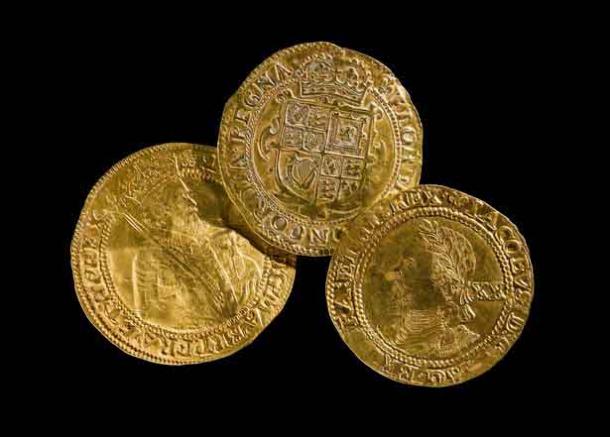
Y Lanfa Powysland Museum and Welshpool Library hopes to acquire this coin hoard to contribute to the museum’s collection, which does not yet include examples of locally found 16th century coins.
‘It would be wonderful to have these coins within the museum’s collection and to put them on display for the public to enjoy,’ said Centre Manager, Saffron Price.
Meanwhile, the early medieval decorated silver double hooked fastener (Treasure case 19.23) was found by Stuart Fletcher in Churchstoke Community, Powys on an undisclosed date.
National Museum Wales says: ‘The stylisation of the debased zoomorphic motifs show that this is Anglo-Saxon work belonging to the ninth century, and it was probably used to fasten an upper garment, as functional costume jewellery.’
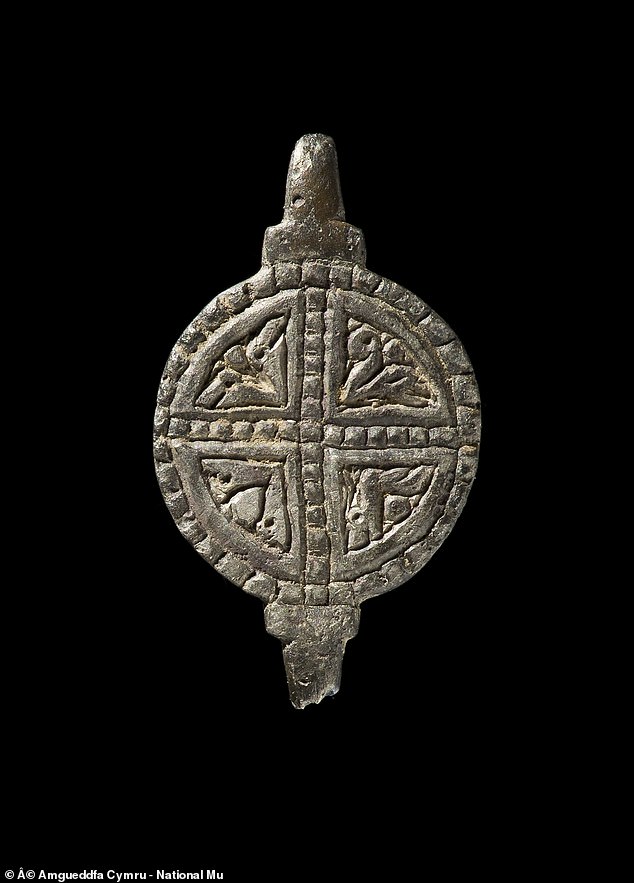
It hopes to acquire this artefact too for the national collection. This unusual object is the first Anglo-Saxon style double-hooked fastener to be identified in Wales,’ said Dr Redknap.
‘Reflecting the status of the original owner, it provides new evidence for the exposure of Anglo-Saxon styles within the early Welsh kingdoms, and of the melting-pot of styles and influences from which Welsh identity was to emerge.





